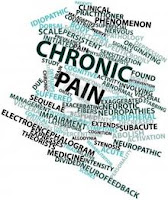Today's post from phcris.org (see link below) is another article (this time from Australia) calling for better awareness of neuropathic pain. It makes the point that not only the general public are pretty much unaware of neuropathy as a problem but many doctors either misdiagnose, or fail to recognise the problem from patients' accounts. The story has always been that because patients find it difficult to describe their symptoms, doctors miss vital clues, or fail to take the patient seriously. Frankly, I wonder if that's true. Neuropathic symptoms may be difficult to describe but they're pretty much unique and a few minutes discussing the problem with the patient must surely lead to an inescapable conclusion that nerve damage may be playing a role in their complaint. I have a feeling that doctors are more wary of the failure rate when it comes to official diagnosis (for records and insurance companies) and treatment rather than anything else, therefore they are tempted to send their patients home, with a 'learn to live it' advice, to avoid lengthy and inconclusive testing procedures and treatment regimes that rarely work anyway.

02 July 2015 PHCRIS
One in three people over the age of 65, and one in five Australians suffer from chronic pain. With an ageing population and increased instances of long-term chronic illnesses such as cancer, diabetes and coronary disease, the need for improved pain management will only increase.
According to Painaustralia—a national not-for-profit body established to improve the treatment and management of pain in Australia—chronic pain remains one of the least understood and most poorly resourced areas in Australia’s primary health care system, with over 80% of people with chronic pain missing out on treatment that could improve their health and quality of life.
Formed in February 2011 to facilitate the implementation of the National Pain Strategy, Painaustralia works with healthcare professionals, health consumers and the national government, to implement best practice models for improved pain management and health care outcomes.
Lesley Brydon, Painaustralia’s Chief Executive Officer, discussed her goals for the National Pain Strategy recently.
“The National Pain Strategy (NPS-2010) sets out a blue print for best practice assessment, and treatment of pain, with a major focus on primary care, where currently chronic pain is very poorly understood and treated,” she said.
“Significant advances in the understanding and treatment of chronic pain made in the past decade have not been translated into clinical practice, and consequently, chronic pain remains a severely neglected area of health care.”
Painaustralia’s Manage Chronic Pain fact sheet, has since been made available through Medical Director, and provides useful information for primary health care practitioners and their patients.
“In addition to providing resources to primary health care practitioners via our website, Painaustralia also advocates for team-based care led by General Practitioners (GPs) working with Allied Health Practitioners, for improved patient outcomes,” Lesley said.
“Online education for pain management is provided for GPs through the RACGP’s GP Learning website, and Allied Health Practitioners, Nurses and Pharmacists through the Australian and New Zealand College of Anaesthetists’ Faculty of Pain Medicine website.”
While Painaustralia has been successful in raising awareness of, and improving, chronic pain management in Australia since its establishment in 2011, it has also been working with international bodies to raise the profile of pain management and treatment worldwide.
On 20 October 2014, Painaustralia joined the International Association for the Study of Pain, the Australian Pain Society, the New Zealand Pain Society, the Faculty of Pain Medicine, and the Australian and New Zealand College of Anaesthetists in launching the Global Year Against Neuropathic Pain, which arises from a lesion or disease affecting the somatosensory system.
Neuropathic pain is often misunderstood and mistreated by health practitioners, due to symptoms, such as shooting or burning pain and numbness, being difficult for patients to describe.
As a result of this, the global campaign has focused on educating health care providers about the causes, signs and symptoms of neuropathic pain, through the creation and dissemination of a series of fact sheets for clinicians and health care professionals that cover specific topics related to neuropathic pain, including: What is Neuropathic Pain; Mechanisms of Neuropathic Pain; Epidemiology of Neuropathic Pain; Central Neuropathic Pain; and HIV Associated Sensory Neuropathy.
The Global Year Against Neuropathic Pain fact sheets, from the International Association for the Study of Pain, have been translated into multiple languages and can be downloaded from the Painaustralia homepage.
This news item was featured in This Week in PHC Issue: 02 July 2015.
http://www.phcris.org.au/news/newsfeed/2015/july/painaus.php
Tidak ada komentar:
Posting Komentar